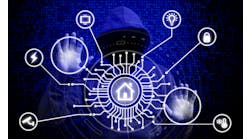The cable pair in the copper infrastructure carries AC signals at different amplitudes in different phases at different frequencies without interference or disturbance from AC signals from other circuits on other cable pairs in the same binder group. At least this is how it is designed to work.
When it doesn’t perform as it should, and the customer complains of a service interruption on any circuit, it is the job of the field technician to determine if there is a problem with the cable pair, a problem with the circuit riding on that cable pair, or if it is a problem with the end-user equipment on either end.
Keep in mind that cable pair may be carrying more than 1 circuit. The pair may be carrying Plain Old Telephone Service (POTS), Internet both downstream and upstream, VoIP, and IPTV. Other cable pairs in the same binder group could be carrying T1 circuits, HDSL circuits, metering circuits, alarm circuits, and a myriad of other circuits.
When a circuit fails on a given cable pair, today’s field technicians must have an understanding of which type of circuit has failed, and how that particular circuit works. If there is more than 1 type of circuit operating over an individual cable pair, then you will have to ask yourself whether the root cause is the cable pair, the circuit, or the end-user equipment on either end.
Customer input is invaluable. Most field technicians have a series of questions to ask the customer that can help narrow down the root cause of the complaint:
• When did the problem first occur? What kind of problem are you having? Has this happened before?
• Have you seen telephone technicians working in the area?
• Do you have Plain Old Telephone Service (POTS) or Voice over IP (VoIP)?
• Do you have more than 1 telephone?
• Is the problem on just 1 phone or all phones?
• Is the problem with your Internet?
• Is the problem with your IPTV?
• Do you have a cordless telephone, an alarm system?
• Do you have problems with any of the above?
• Do you have jacks in the house without telephone or equipment connected to them?
• Is the noise on your line static or hum?
• Do you have problems calling out?
• Do you have problems with incoming calls?
• If you are not going to be home, do you have a contact number?
If there is nothing obvious that points to the root cause of the failure, a step-by-step process will provide an indication as to whether the failure is the cable pair, the circuit or circuits, or end-user equipment.
After customer contact, most field technicians begin troubleshooting at the remote. If the customer needs to be home, then the field technician will test from the network interface in, and if the problem is not at the customer premises then there is no reason to keep the customer at home.
The field technician will test the cable pair for obvious trouble on the cable pair. Most quality multi-functional field technician test sets have an auto test that tests for crossed battery from other cable pairs, a short or ground on the pair, a capacitive balance test for open cable pairs, and a longitudinal balance test looking for series resistance or split cable pairs.
Here is where it gets iffy for the field technician who is 2 hours into the job and it is time for the dreaded Where are you at and what are you doing? call from the supervisor. Does he chase down the root cause affecting the cable pair or does he transfer the circuit to another cable pair? He still has to determine if that fixes the trouble.
If either option is addressed, cut-to-clear or fix the cable pair, testing at the premises is in order, and that gets really tricky. If the customer has POTS, then a POTS auto test is run with the multi-functional test set testing for loop current, station ground, circuit loss, power influence, circuit noise, and longitudinal balance.
If Power influence (PI) is > 80dBrnC, there will be a hum on the POTS circuit with minimal effect on DSL. If the high power influence is the result of open bonds, then this could be the reason that there is AM radio interference that does affect the DSL circuit. If the cable pair is open 1 side on a lateral or bridged tap, then it will create a hum on the POTS circuit and affect every DSL circuit on the DSL DSLAM.
If applicable, DSL and IPTV testing is next, and, again, the field technician’s multi-functional test set comes into play. As my associate Vernon May of Vernon May Solutions (http://vmaysolutions.com/), who trains field technicians to troubleshoot DSL and IPTV circuits says, fixing something that you don’t understand is very difficult. Too many DSL Technicians and Programmers face this problem every day. Just reading the pass/fail results from the test sets is not enough. Understanding how DSL works and how it works with the copper plant, Customer Premises Equipment (CPE), and Ethernet network is crucial to operational success. Following a logical problem-solving process based on this understanding produces quick trouble fixes and fewer repeated troubles.
When other circuits such as TI and 4 wire HDSL circuits that ride on copper cable pairs fail, they need a slightly different process of fault locating. There is end-user equipment problems, electronics in the field such as repeaters and doublers that fail, and if the problem is in the cable, then there are 2 cable pairs to test and repair, not just 1.
On any given day, a field technician will encounter any of the above circuits. Most of the field technicians that I work with are more than equal to the task.
Signing off
If you have anything to add to this conversation, please jump in. Or, if you have something on your mind about your challenges in the field, share it with me. Anonymously if you prefer. I’m here to help you men and women and often I learn from you — so don’t be shy! Send an email to [email protected] or call me at 831.818.3930. If I’m teaching or consulting when you call, I promise I’ll call you back. If you would like to subscribe to my newsletter, send an email to [email protected] with a subject line "add me to your newsletter". Thank you, as always, for your loyal readership.





